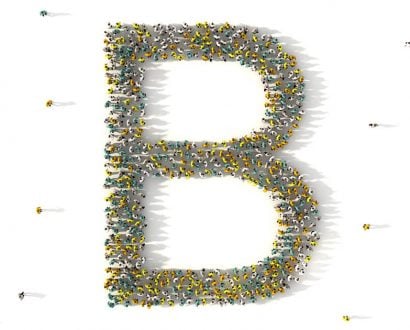As a C-suite executive, do you struggle with the Gen Z population in your company? Alternatively, do you wish your Gen Z population had better general business skills? Better time management skills?
As a C-suite executive myself, I am tired of the fight over the Gen Z skill sets and work ethic as compared to ours. So instead, I generally try to appeal to their desires to add tools to their utility box that allow them to get where they seem to want to go better, faster and more effectively.

Life is about optimizing the use of the finite resources we have at our disposal.
Below I’ve added foundational time management principles I call frameworks, which can help anyone, including the Gen Z population, achieve their desired outcomes.
Life is about optimizing the use of the finite resources we have at our disposal. Time is the most depreciating asset or resource we have. I have been working on how to master time management skills and tools for more than 50 years. That’s because I was never blessed with raw talent, so I figured that I needed an edge. I needed to use my time more effectively than the smart kids in class as I attempted to succeed by outworking them.
Organization framework
You cannot will yourself to have better time management skills; I find that you need a collection of tools and practice as you learn to prioritize and optimize your workdays, weeks, months and years. Time management requires discipline as you execute on your strategic choices. By exercising discipline with the few frameworks explained below, you become more reliable and valuable to your peers, constituents and bosses.
To identify what deserves your attention, I use the Uncalendar product to memorialize my weekly schedule, and to consider the following frameworks: Biorhythms; Due versus Do; Red. Blue. Black.; ‘begin with the end in mind’; and more.
The first framework to mention is nothing new to old-timers but could be for the Gen Z population. With them in mind, let me introduce the Eisenhower Matrix, which helps filter tasks into four quadrants:
• Q1 = Urgent and important: Immediate action is required.
• Q2 = Important and non-urgent: Action-taking can be done thoughtfully.
• Q3 = Urgent and non-important: Delegation or elimination.
• Q4 = Not important and non-urgent: Distractions to minimize.
The focus? Prioritize quality time in Q2.
How do you know what is important? First, important to whom? The platform you work for, another person creating this urgency, or you? The Rabbit in Alice in Wonderland once said to Alice: “If you don’t know where you are going, any path will get you there.”
Do you know where you are going? Do you have a clear outcome in mind? Can you indeed ‘begin with the end in mind’? If you do this, it surely makes it easier for you to determine the importance of a particular task.

You cannot will yourself to have better time management skills; I find that you need a collection of tools and practice as you learn to prioritize and optimize.
Plan ahead
I find that most young professionals struggle to plan and then work to their plan. However, if they map out when they will do the work, factoring in collaboration with a colleague (and their schedule) or what information they need to meet the due date, then it’s merely a matter of scheduling the tasks and contacts so you have time to execute.
Biorhythms: I am a big believer in knowing your biorhythms when you schedule out your week’s work plan. I know that I am best in the morning so I do my ‘hard’ tasks then, as well as my strategic ones (that I also would do over the weekend when no-one is around to bother me). I have concentration problems right after lunch, so I tend to schedule administrative tasks and those tasks that are more mindless between 2pm and 4pm.
DO versus DUE: Do you know when the task is due? Have you focused on when you will do it? Many Gen Zers, fresh from the habitual college-age all-nighters, procrastinate until the last minute. Then, at 1am on a Friday, they belatedly try to finish something for their boss and find themselves stuck when they realize they need information that a colleague possesses.
That colleague, as well as the boss, are unavailable and now they cannot finish the assignment or they find themselves considering delivering a less-than desirable product.
Red. Blue. Black.: When I organize my time, I essentially need to put time limits on my focus. When you think about your entire life, personal and familial and professional, generally there are three types of activities:
1. RED – those activities that are the lifeblood of your existence but comparatively produce nominal value. They usually are made up of the stuff you just have to do – expense reports, grocery shopping, laundry, dry cleaning pickup/drop off, meetings with HR.
2. BLUE – those activities that are the efforts you make daily doing your job. It’s that effort playing your position on the team, executing tactics on behalf of the strategy the platform is committed to. These tasks are executed today for today’s benefit. For salespeople, it’s revenue generating activities.
3. BLACK – those activities executed today for an expected pay off in the future. Strategic planning, training to skill you up on a task, marketing or advertising are good examples.
Uncalendar to memorialize being intentional with my time
Every quarter I determine how much of my weekly efforts will be limited to tasks deemed Red, Blue or Black. To make my math simple, let’s assume that I work 50 hours over seven days a week.

I am a big believer in knowing your biorhythms when you schedule out your week’s work plan.
If I decide (or an accountability partner of your choice helps you conclude) that you want to balance your effort to 10 percent Red, 70 percent Blue and 20 percent Black, then I know to pre-schedule appointments in my Uncalendar for five hours of Red, 35 hours of Blue and 10 hours of Black.
And I do this based on my biorhythms:
1. BLACK on the weekend or first thing in the morning
2. RED in the afternoons after lunch
3. BLUE during public time, when my clients, customers and constituents are also in public time and are therefore available
Planning my week in this way allows me to understand and plan for my energy peaks and troughs and therefore use my time and complete my tasks in the most efficient way possible.







